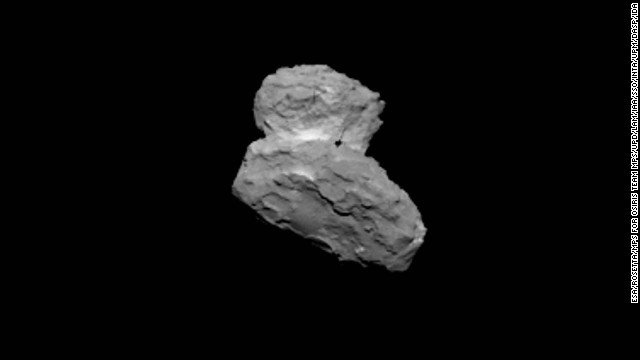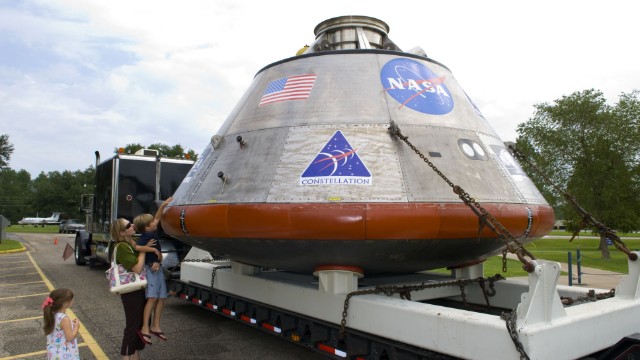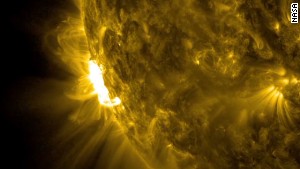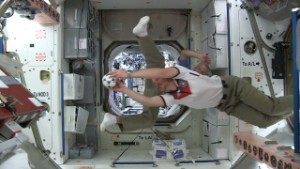Δείτε έναν άνθρωπο να κόβει βόλτες στη Σελήνη! (Βίντεο)
Πέμπτη, 14 Αυγούστου , 201422:53 μ.μ || http://ikypros.com || in.gr
Ένας φανατικός φίλος του Διαστήματος με το ψευδώνυμο Wowforreel μπήκε στην υπηρεσία Google Moon και «εξερεύνησε» το αρχείο των χιλιάδων εικόνων της υπηρεσίας από τη Σελήνη. Σε μια από αυτές πρόσεξε κάτι που του κίνησε το ενδιαφέρον. Στην εικόνα εμφανίζεται κάτι που μοιάζει με ανθρώπινη φιγούρα να κινείται πάνω στην επιφάνεια του φυσικού μας δορυφόρου.
Ο Wowforreel μάλιστα έφτιαξε ένα βίντεο με το εύρημα του και το ανάρτησε στο YouΤube. Άλλοι «συνάδελφοι» του Wowforreal υποστήριξαν πρόσφατα ότι εντόπισαν στις εικόνες της Σελήνης κάτι που μοιάζει με UFO.
Δεν είναι η πρώτη φορά που μια φωτογραφία από το Διάστημα περιέχει κάτι που μοιάζει με άνθρωπο, με ανθρώπινο δημιούργημα ή κάτι που παραπέμπει σε εξωγήινο πολιτισμό. Σε όλες τις περιπτώσεις όπως και σε αυτή την τελευταία οι μιλούν για κάποια παιχνίδια του φωτός που ξεγελούν το μυαλό του ανθρώπου.
Οι ειδικοί κάνουν λόγο για ένα ψυχολογικό φαινόμενο που ονομάζεται «παρειδωλία» κατά το οποίο ένα δυσδιάκριτο ή ασαφές εξωτερικό ερέθισμα εκλαμβάνεται εσφαλμένα ως ευκρινές και πλήρως αναγνωρίσιμο. Με απλά λόγια κάποιες φορές ο άνθρωπος βλέπει αυτό που θέλει να δει όπως στην προκειμένη περίπτωση οι φίλοι του Διαστήματος και οι θιασώτες της ύπαρξης εξωγήινων βλέπουν συχνά σε διάφορες εικόνες πρόσωπα και αντικείμενα επειδή απλά θέλουν να τα δουν.
Πηγή: in.gr

Ένας φανατικός φίλος του Διαστήματος με το ψευδώνυμο Wowforreel
μπήκε στην υπηρεσία Google Moon και «εξερεύνησε» το αρχείο των χιλιάδων
εικόνων της υπηρεσίας από τη Σελήνη. Σε μια από αυτές πρόσεξε κάτι που
του κίνησε το ενδιαφέρον. Στην εικόνα εμφανίζεται κάτι που μοιάζει με
ανθρώπινη φιγούρα να κινείται πάνω στην επιφάνεια του φυσικού μας
δορυφόρου.
Ο Wowforreel μάλιστα έφτιαξε ένα βίντεο με το εύρημα του και το ανάρτησε στο YouΤube. Άλλοι «συνάδελφοι» του Wowforreal υποστήριξαν πρόσφατα ότι εντόπισαν στις εικόνες της Σελήνης κάτι που μοιάζει με UFO.
Δεν είναι η πρώτη φορά που μια φωτογραφία από το Διάστημα περιέχει κάτι που μοιάζει με άνθρωπο, με ανθρώπινο δημιούργημα ή κάτι που παραπέμπει σε εξωγήινο πολιτισμό. Σε όλες τις περιπτώσεις όπως και σε αυτή την τελευταία οι μιλούν για κάποια παιχνίδια του φωτός που ξεγελούν το μυαλό του ανθρώπου.
Οι ειδικοί κάνουν λόγο για ένα ψυχολογικό φαινόμενο που ονομάζεται «παρειδωλία» κατά το οποίο ένα δυσδιάκριτο ή ασαφές εξωτερικό ερέθισμα εκλαμβάνεται εσφαλμένα ως ευκρινές και πλήρως αναγνωρίσιμο. Με απλά λόγια κάποιες φορές ο άνθρωπος βλέπει αυτό που θέλει να δει όπως στην προκειμένη περίπτωση οι φίλοι του Διαστήματος και οι θιασώτες της ύπαρξης εξωγήινων βλέπουν συχνά σε διάφορες εικόνες πρόσωπα και αντικείμενα επειδή απλά θέλουν να τα δουν.
Πηγή: in.gr
- See more at: http://ikypros.com/?p=35446#sthash.drBWFFov.dpuf

Ένας φανατικός φίλος του Διαστήματος με το ψευδώνυμο Wowforreel
μπήκε στην υπηρεσία Google Moon και «εξερεύνησε» το αρχείο των χιλιάδων
εικόνων της υπηρεσίας από τη Σελήνη. Σε μια από αυτές πρόσεξε κάτι που
του κίνησε το ενδιαφέρον. Στην εικόνα εμφανίζεται κάτι που μοιάζει με
ανθρώπινη φιγούρα να κινείται πάνω στην επιφάνεια του φυσικού μας
δορυφόρου.
Ο Wowforreel μάλιστα έφτιαξε ένα βίντεο με το εύρημα του και το ανάρτησε στο YouΤube. Άλλοι «συνάδελφοι» του Wowforreal υποστήριξαν πρόσφατα ότι εντόπισαν στις εικόνες της Σελήνης κάτι που μοιάζει με UFO.
Δεν είναι η πρώτη φορά που μια φωτογραφία από το Διάστημα περιέχει κάτι που μοιάζει με άνθρωπο, με ανθρώπινο δημιούργημα ή κάτι που παραπέμπει σε εξωγήινο πολιτισμό. Σε όλες τις περιπτώσεις όπως και σε αυτή την τελευταία οι μιλούν για κάποια παιχνίδια του φωτός που ξεγελούν το μυαλό του ανθρώπου.
Οι ειδικοί κάνουν λόγο για ένα ψυχολογικό φαινόμενο που ονομάζεται «παρειδωλία» κατά το οποίο ένα δυσδιάκριτο ή ασαφές εξωτερικό ερέθισμα εκλαμβάνεται εσφαλμένα ως ευκρινές και πλήρως αναγνωρίσιμο. Με απλά λόγια κάποιες φορές ο άνθρωπος βλέπει αυτό που θέλει να δει όπως στην προκειμένη περίπτωση οι φίλοι του Διαστήματος και οι θιασώτες της ύπαρξης εξωγήινων βλέπουν συχνά σε διάφορες εικόνες πρόσωπα και αντικείμενα επειδή απλά θέλουν να τα δουν.
Πηγή: in.gr
- See more at: http://ikypros.com/?p=35446#sthash.drBWFFov.dpuf
Πέμπτη, 14 Αυγούστου , 201422:53 μ.μ || http://ikypros.com || in.gr
 |
| Στην εικόνα εμφανίζεται κάτι που μοιάζει με ανθρώπινη φιγούρα να κινείται πάνω στην Σελήνη |
Ένας φανατικός φίλος του Διαστήματος με το ψευδώνυμο Wowforreel μπήκε στην υπηρεσία Google Moon και «εξερεύνησε» το αρχείο των χιλιάδων εικόνων της υπηρεσίας από τη Σελήνη. Σε μια από αυτές πρόσεξε κάτι που του κίνησε το ενδιαφέρον. Στην εικόνα εμφανίζεται κάτι που μοιάζει με ανθρώπινη φιγούρα να κινείται πάνω στην επιφάνεια του φυσικού μας δορυφόρου.
Ο Wowforreel μάλιστα έφτιαξε ένα βίντεο με το εύρημα του και το ανάρτησε στο YouΤube. Άλλοι «συνάδελφοι» του Wowforreal υποστήριξαν πρόσφατα ότι εντόπισαν στις εικόνες της Σελήνης κάτι που μοιάζει με UFO.
Δεν είναι η πρώτη φορά που μια φωτογραφία από το Διάστημα περιέχει κάτι που μοιάζει με άνθρωπο, με ανθρώπινο δημιούργημα ή κάτι που παραπέμπει σε εξωγήινο πολιτισμό. Σε όλες τις περιπτώσεις όπως και σε αυτή την τελευταία οι μιλούν για κάποια παιχνίδια του φωτός που ξεγελούν το μυαλό του ανθρώπου.
Οι ειδικοί κάνουν λόγο για ένα ψυχολογικό φαινόμενο που ονομάζεται «παρειδωλία» κατά το οποίο ένα δυσδιάκριτο ή ασαφές εξωτερικό ερέθισμα εκλαμβάνεται εσφαλμένα ως ευκρινές και πλήρως αναγνωρίσιμο. Με απλά λόγια κάποιες φορές ο άνθρωπος βλέπει αυτό που θέλει να δει όπως στην προκειμένη περίπτωση οι φίλοι του Διαστήματος και οι θιασώτες της ύπαρξης εξωγήινων βλέπουν συχνά σε διάφορες εικόνες πρόσωπα και αντικείμενα επειδή απλά θέλουν να τα δουν.
Πηγή: in.gr
Δείτε έναν άνθρωπο να κόβει βόλτες στη Σελήνη! (Βίντεο)

Ο Wowforreel μάλιστα έφτιαξε ένα βίντεο με το εύρημα του και το ανάρτησε στο YouΤube. Άλλοι «συνάδελφοι» του Wowforreal υποστήριξαν πρόσφατα ότι εντόπισαν στις εικόνες της Σελήνης κάτι που μοιάζει με UFO.
Δεν είναι η πρώτη φορά που μια φωτογραφία από το Διάστημα περιέχει κάτι που μοιάζει με άνθρωπο, με ανθρώπινο δημιούργημα ή κάτι που παραπέμπει σε εξωγήινο πολιτισμό. Σε όλες τις περιπτώσεις όπως και σε αυτή την τελευταία οι μιλούν για κάποια παιχνίδια του φωτός που ξεγελούν το μυαλό του ανθρώπου.
Οι ειδικοί κάνουν λόγο για ένα ψυχολογικό φαινόμενο που ονομάζεται «παρειδωλία» κατά το οποίο ένα δυσδιάκριτο ή ασαφές εξωτερικό ερέθισμα εκλαμβάνεται εσφαλμένα ως ευκρινές και πλήρως αναγνωρίσιμο. Με απλά λόγια κάποιες φορές ο άνθρωπος βλέπει αυτό που θέλει να δει όπως στην προκειμένη περίπτωση οι φίλοι του Διαστήματος και οι θιασώτες της ύπαρξης εξωγήινων βλέπουν συχνά σε διάφορες εικόνες πρόσωπα και αντικείμενα επειδή απλά θέλουν να τα δουν.
Πηγή: in.gr
- See more at: http://ikypros.com/?p=35446#sthash.drBWFFov.dpuf
Δείτε έναν άνθρωπο να κόβει βόλτες στη Σελήνη! (Βίντεο)

Ο Wowforreel μάλιστα έφτιαξε ένα βίντεο με το εύρημα του και το ανάρτησε στο YouΤube. Άλλοι «συνάδελφοι» του Wowforreal υποστήριξαν πρόσφατα ότι εντόπισαν στις εικόνες της Σελήνης κάτι που μοιάζει με UFO.
Δεν είναι η πρώτη φορά που μια φωτογραφία από το Διάστημα περιέχει κάτι που μοιάζει με άνθρωπο, με ανθρώπινο δημιούργημα ή κάτι που παραπέμπει σε εξωγήινο πολιτισμό. Σε όλες τις περιπτώσεις όπως και σε αυτή την τελευταία οι μιλούν για κάποια παιχνίδια του φωτός που ξεγελούν το μυαλό του ανθρώπου.
Οι ειδικοί κάνουν λόγο για ένα ψυχολογικό φαινόμενο που ονομάζεται «παρειδωλία» κατά το οποίο ένα δυσδιάκριτο ή ασαφές εξωτερικό ερέθισμα εκλαμβάνεται εσφαλμένα ως ευκρινές και πλήρως αναγνωρίσιμο. Με απλά λόγια κάποιες φορές ο άνθρωπος βλέπει αυτό που θέλει να δει όπως στην προκειμένη περίπτωση οι φίλοι του Διαστήματος και οι θιασώτες της ύπαρξης εξωγήινων βλέπουν συχνά σε διάφορες εικόνες πρόσωπα και αντικείμενα επειδή απλά θέλουν να τα δουν.
Πηγή: in.gr
- See more at: http://ikypros.com/?p=35446#sthash.drBWFFov.dpuf


 Rosetta: The comet chaser
Rosetta: The comet chaser

















